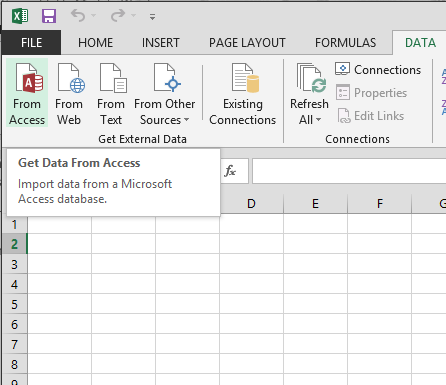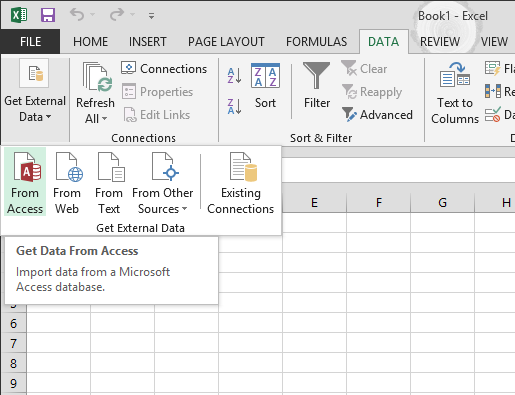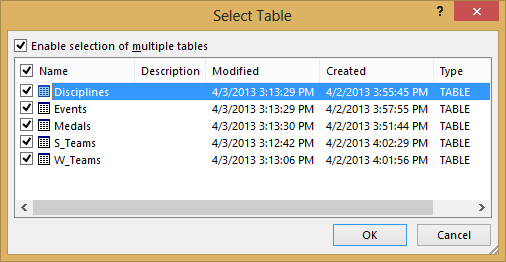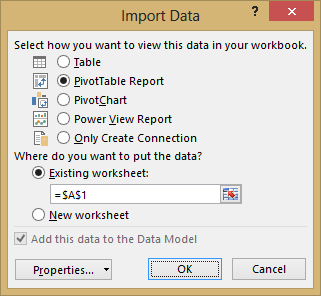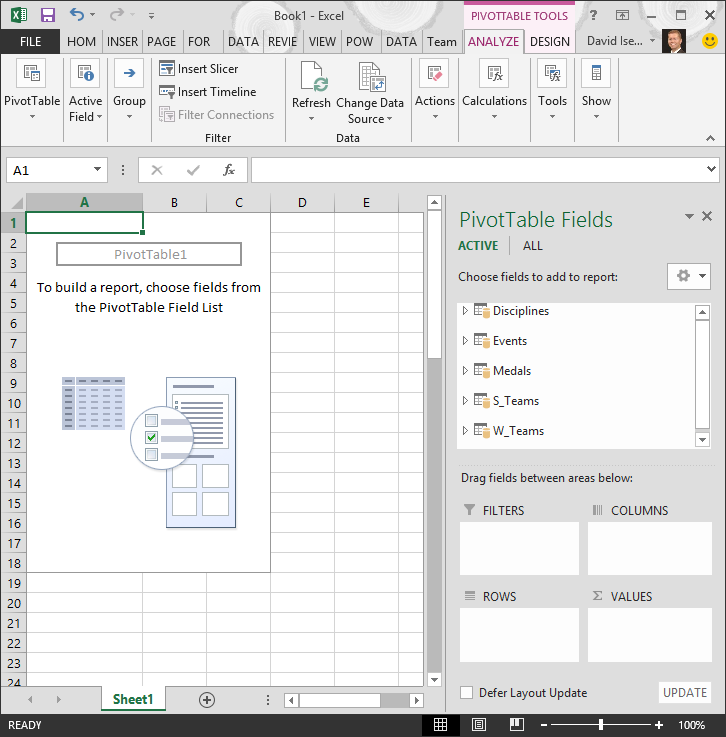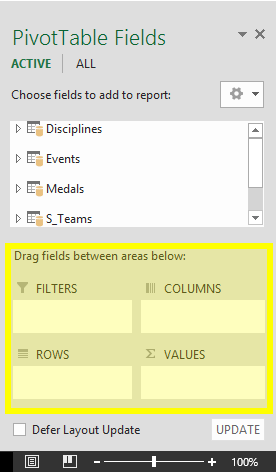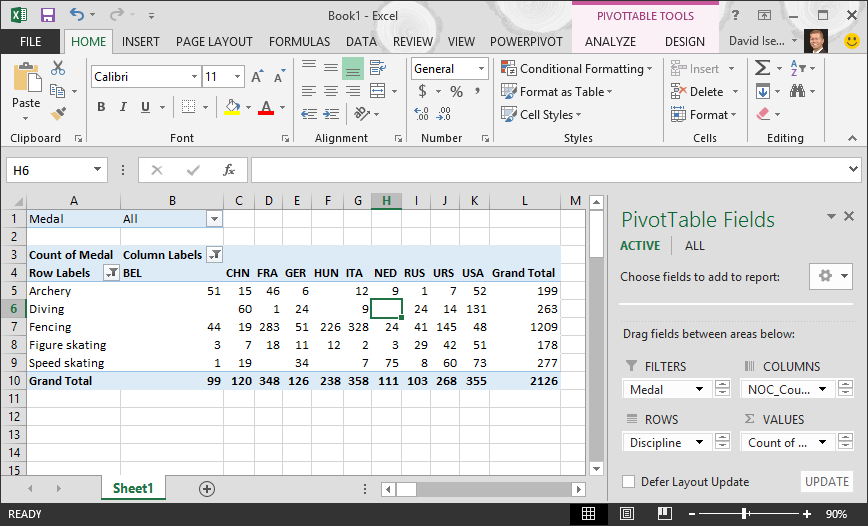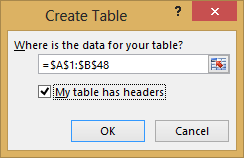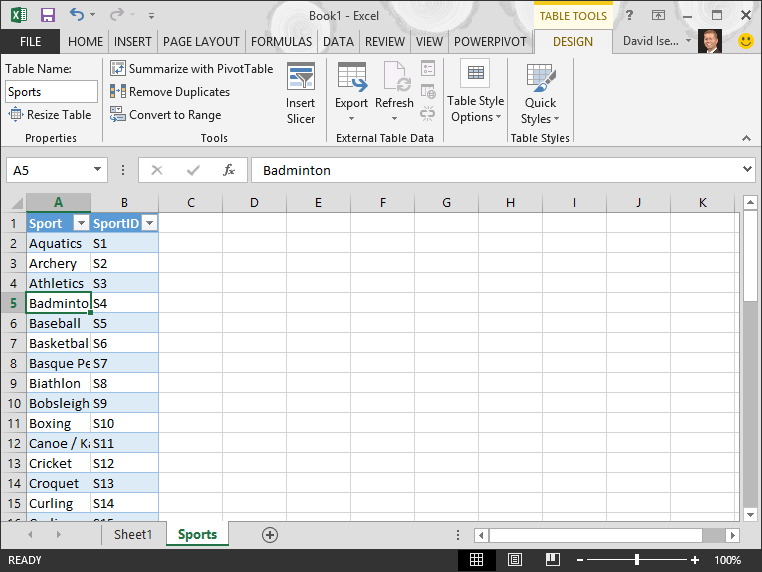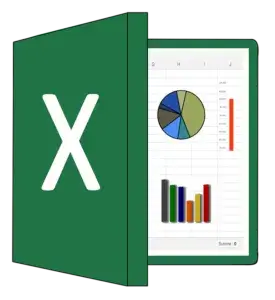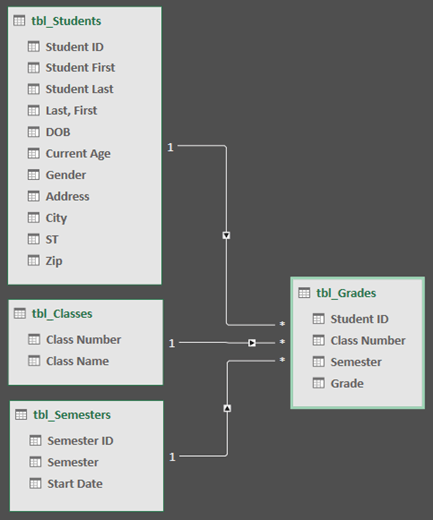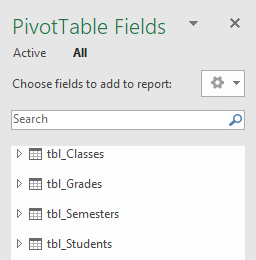Spreadsheet Sample Data in Excel & CSV Formats
I have put this page together to provide everyone with data that you would come across in the REAL WORLD. Whether you are looking for some Pivot Table practice data or data that you can flow through an Excel dashboard you are building, this article will hopefully provide you with a good starting point.
All the example data is free for you to use any way you’d like. I have saved the data in both an Excel format (.xlsx) and a comma-separated values format (.csv).
What Can This Data Be Useful For?
-
Feeding Dashboards
-
Manipulating in Power Query
-
Feeding into Power BI
-
Practicing Excel Formulas (VLOOKUP Practice Data)
-
Testing Spreadsheet Solutions
-
Example Data for Articles or Videos You Are Making
Which Spreadsheet/BI Programs Can I Use This Data With?
-
Power BI
-
Tableau
-
LibreOffice (OpenOffice)
-
Tell me in the comments if there are others!
-
Microsoft Excel
-
Google Sheets
-
Apple Numbers
-
Excel’s Power Query
Company Employee Example Data
Folks in Human Resources actually deal with a lot of data. This data can be great for creating dashboards and summarizing various aspects of a company’s workforce. In this database, there are 1,000 rows of data encompassing popular data points that HR professionals deal with on a regular basis.
You can use this data to practice popular spreadsheet features including Pivot Table, Vlookups, Xlookups, Power Query automation, charts, and Dashboards.
Columns in this Data Set:
Below is a list of all the fields of data included in the sample data.
-
Employee ID
-
Full Name
-
Job Title
-
Gender
-
Ethnicity
-
Age
-
Hire Date
-
Annual Salary (USD)
-
Bonus %
-
Department
-
Business Unit
-
Country
-
City
-
Exit Date
Data Preview (Employee Records)
Download This Sample Data
If you would like to download this data instantly and for free, just click the download button below. The download will be in the form of a zipped file (.zip) and include both a Microsoft Excel (.xlsx) and CSV file version of the raw data.
Sales Force Example Data (Coming Soon!)
Columns in this Data Set:
Below is a list of all the fields of data included in the sample data.
-
YTD Sales
-
Commission Rate
-
Phone Number
-
Leader Name
-
Units Sold
-
Avg. Price Per Unit
-
Employee Name
-
Region
-
Office
-
Prospecting
-
Negotiating
-
Orders
Data Preview (Sales Team Data)
Company Financial Results Example Data
Columns in this Data Set:
Below is a list of all the fields of data included in the sample data.
-
Month
-
Year
-
Scenario (Actuals/Forecast/Budget)
-
Currency
-
Account
-
Department
-
Business Unit
-
Amount
Data Preview (Financial Data)
Website Traffic Example Data (Coming Soon!)
Columns in this Data Set:
Below is a list of all the fields of data included in the sample data.
-
Users
-
Bounce Rate
-
Keywords
-
Avg. SERP
-
Avg. Time on Page
-
Page URL
-
Page Title
-
Pageviews
-
Sessions
-
Social Media Traffic
Data Preview (Web Traffic)
I Hope This Microsoft Excel Article Helped!
Hopefully, you were able to find 1 or more data sets that you can use for your spreadsheet project. If you have any questions about the data I’ve compiled or suggestions on more datasets that would be useful, please let me know in the comments section below.
About The Author
Hey there! I’m Chris and I run TheSpreadsheetGuru website in my spare time. By day, I’m actually a finance professional who relies on Microsoft Excel quite heavily in the corporate world. I love taking the things I learn in the “real world” and sharing them with everyone here on this site so that you too can become a spreadsheet guru at your company.
Through my years in the corporate world, I’ve been able to pick up on opportunities to make working with Excel better and have built a variety of Excel add-ins, from inserting tickmark symbols to automating copy/pasting from Excel to PowerPoint. If you’d like to keep up to date with the latest Excel news and directly get emailed the most meaningful Excel tips I’ve learned over the years, you can sign up for my free newsletters. I hope I was able to provide you with some value today and I hope to see you back here soon!
— Chris
Founder, TheSpreadsheetGuru.com
Содержание
- Tutorial: Import Data into Excel, and Create a Data Model
- The sections in this tutorial are the following:
- Import data from a database
- Import data from a spreadsheet
- Import data using copy and paste
- Download Sample Excel File with Data for Analysis
- Sample excel sheet with employee data
- Sample sales data excel
- Sample excel sheet with student data
- Excel sample data for pivot tables
- Difference Between .xls file and .xlsx file
- Excel Sample Data
- Why Use Sample Data in Excel?
- Why do people download my sample data workbooks, to use in Excel?
- Sample Data Files
- 1) Office Supply Sales Data
- To get this sample data:
- 2) Food Sales Data
- 3) Workplace Safety Data
- 4) Work Orders Data
- 5) Hockey Players Data
- 5a) Hockey Player Data Analysis
- 6) Winter Athletes Data
- 7) Football Players Data
-
Food Nutrients Data
- Suggested Use
- Get Food Nutrients Data File
- 9) Insurance Policies
- Download Sample Data
- 1a) Office Supply Sales Table
Tutorial: Import Data into Excel, and Create a Data Model
Abstract: This is the first tutorial in a series designed to get you acquainted and comfortable using Excel and its built-in data mash-up and analysis features. These tutorials build and refine an Excel workbook from scratch, build a data model, then create amazing interactive reports using Power View. The tutorials are designed to demonstrate Microsoft Business Intelligence features and capabilities in Excel, PivotTables, Power Pivot, and Power View.
Note: This article describes data models in Excel 2013. However, the same data modeling and Power Pivot features introduced in Excel 2013 also apply to Excel 2016.
In these tutorials you learn how to import and explore data in Excel, build and refine a data model using Power Pivot, and create interactive reports with Power View that you can publish, protect, and share.
The tutorials in this series are the following:
Import Data into Excel 2013, and Create a Data Model
In this tutorial, you start with a blank Excel workbook.
The sections in this tutorial are the following:
At the end of this tutorial is a quiz you can take to test your learning.
This tutorial series uses data describing Olympic Medals, hosting countries, and various Olympic sporting events. We suggest you go through each tutorial in order. Also, tutorials use Excel 2013 with Power Pivot enabled. For more information on Excel 2013, click here. For guidance on enabling Power Pivot, click here.
Import data from a database
We start this tutorial with a blank workbook. The goal in this section is to connect to an external data source, and import that data into Excel for further analysis.
Let’s start by downloading some data from the Internet. The data describes Olympic Medals, and is a Microsoft Access database.
Click the following links to download files we use during this tutorial series. Download each of the four files to a location that’s easily accessible, such as Downloads or My Documents, or to a new folder you create:
> OlympicMedals.accdb Access database
> OlympicSports.xlsx Excel workbook
> Population.xlsx Excel workbook
> DiscImage_table.xlsx Excel workbook
In Excel 2013, open a blank workbook.
Click DATA > Get External Data > From Access. The ribbon adjusts dynamically based on the width of your workbook, so the commands on your ribbon may look slightly different from the following screens. The first screen shows the ribbon when a workbook is wide, the second image shows a workbook that has been resized to take up only a portion of the screen.
Select the OlympicMedals.accdb file you downloaded and click Open. The following Select Table window appears, displaying the tables found in the database. Tables in a database are similar to worksheets or tables in Excel. Check the Enable selection of multiple tables box, and select all the tables. Then click OK.
The Import Data window appears.
Note: Notice the checkbox at the bottom of the window that allows you to Add this data to the Data Model, shown in the following screen. A Data Model is created automatically when you import or work with two or more tables simultaneously. A Data Model integrates the tables, enabling extensive analysis using PivotTables, Power Pivot, and Power View. When you import tables from a database, the existing database relationships between those tables is used to create the Data Model in Excel. The Data Model is transparent in Excel, but you can view and modify it directly using the Power Pivot add-in. The Data Model is discussed in more detail later in this tutorial.
Select the PivotTable Report option, which imports the tables into Excel and prepares a PivotTable for analyzing the imported tables, and click OK.
Once the data is imported, a PivotTable is created using the imported tables.
With the data imported into Excel, and the Data Model automatically created, you’re ready to explore the data.
Explore data using a PivotTable
Exploring imported data is easy using a PivotTable. In a PivotTable, you drag fields (similar to columns in Excel) from tables (like the tables you just imported from the Access database) into different areas of the PivotTable to adjust how it presents your data. A PivotTable has four areas: FILTERS, COLUMNS, ROWS, and VALUES.
It might take some experimenting to determine which area a field should be dragged to. You can drag as many or few fields from your tables as you like, until the PivotTable presents your data how you want to see it. Feel free to explore by dragging fields into different areas of the PivotTable; the underlying data is not affected when you arrange fields in a PivotTable.
Let’s explore the Olympic Medals data in the PivotTable, starting with Olympic medalists organized by discipline, medal type, and the athlete’s country or region.
In PivotTable Fields, expand the Medals table by clicking the arrow beside it. Find the NOC_CountryRegion field in the expanded Medals table, and drag it to the COLUMNS area. NOC stands for National Olympic Committees, which is the organizational unit for a country or region.
Next, from the Disciplines table, drag Discipline to the ROWS area.
Let’s filter Disciplines to display only five sports: Archery, Diving, Fencing, Figure Skating, and Speed Skating. You can do this from within the PivotTable Fields area, or from the Row Labels filter in the PivotTable itself.
Click anywhere in the PivotTable to ensure the Excel PivotTable is selected. In the PivotTable Fields list, where the Disciplines table is expanded, hover over its Discipline field and a dropdown arrow appears to the right of the field. Click the dropdown, click (Select All)to remove all selections, then scroll down and select Archery, Diving, Fencing, Figure Skating, and Speed Skating. Click OK.
Or, in the Row Labels section of the PivotTable, click the dropdown next to Row Labels in the PivotTable, click (Select All) to remove all selections, then scroll down and select Archery, Diving, Fencing, Figure Skating, and Speed Skating. Click OK.
In PivotTable Fields, from the Medals table, drag Medal to the VALUES area. Since Values must be numeric, Excel automatically changes Medal to Count of Medal.
From the Medals table, select Medal again and drag it into the FILTERS area.
Let’s filter the PivotTable to display only those countries or regions with more than 90 total medals. Here’s how.
In the PivotTable, click the dropdown to the right of Column Labels.
Select Value Filters and select Greater Than….
Type 90 in the last field (on the right). Click OK.
Your PivotTable looks like the following screen.
With little effort, you now have a basic PivotTable that includes fields from three different tables. What made this task so simple were the pre-existing relationships among the tables. Because table relationships existed in the source database, and because you imported all the tables in a single operation, Excel could recreate those table relationships in its Data Model.
But what if your data originates from different sources, or is imported at a later time? Typically, you can create relationships with new data based on matching columns. In the next step, you import additional tables, and learn how to create new relationships.
Import data from a spreadsheet
Now let’s import data from another source, this time from an existing workbook, then specify the relationships between our existing data and the new data. Relationships let you analyze collections of data in Excel, and create interesting and immersive visualizations from the data you import.
Let’s start by creating a blank worksheet, then import data from an Excel workbook.
Insert a new Excel worksheet, and name it Sports.
Browse to the folder that contains the downloaded sample data files, and open OlympicSports.xlsx.
Select and copy the data in Sheet1. If you select a cell with data, such as cell A1, you can press Ctrl + A to select all adjacent data. Close the OlympicSports.xlsx workbook.
On the Sports worksheet, place your cursor in cell A1 and paste the data.
With the data still highlighted, press Ctrl + T to format the data as a table. You can also format the data as a table from the ribbon by selecting HOME > Format as Table. Since the data has headers, select My table has headers in the Create Table window that appears, as shown here.
Formatting the data as a table has many advantages. You can assign a name to a table, which makes it easy to identify. You can also establish relationships between tables, enabling exploration and analysis in PivotTables, Power Pivot, and Power View.
Name the table. In TABLE TOOLS > DESIGN > Properties, locate the Table Name field and type Sports. The workbook looks like the following screen.
Save the workbook.
Import data using copy and paste
Now that we’ve imported data from an Excel workbook, let’s import data from a table we find on a web page, or any other source from which we can copy and paste into Excel. In the following steps, you add the Olympic host cities from a table.
Insert a new Excel worksheet, and name it Hosts.
Select and copy the following table, including the table headers.
Источник
Download Sample Excel File with Data for Analysis
If you still need Excel assignment help, please contact AssignmentCore – its MS Excel experts will handle your homework online.
Sample excel sheet with employee data
This excel sheet contains 500 test employee data.
Sample sales data excel
Sample excel sheet with student data
Excel sample data for pivot tables
More Sample Files for Free Download
As you all know that Microsoft Office is a product of Microsoft company but do you know that in old version 2003 of Microsoft office we can not open the file of the new version 2007 while in the new version old version We can open files easily.
Difference Between .xls file and .xlsx file
.xlsx file – This is a file extension of Microsoft excel spreadsheet 2007 and its foundation is on XML and the files saved in it are in the form of text files with the help of XML.
With this spreadsheet, we can use the .xls files of the old version excel 2003. It does not support macros.
.xls file – This Microsoft excel spreadsheet has a file extension of all the versions that have come up to 2003 and its foundation is on binary data. With the help of this spreadsheet, files with .xls can be used, but new versions of the word 2007 cannot use files with .xlsx. It supports macros.
In simple words, it can be said that when Microsoft company launched excel 2003, when we save the file, in that by default .xls extension which we can open in any version of Microsoft excel.
But Microsoft launched excel 2007 after 2003, every file we save in it is saved in by default .xlsx extension, due to which we cannot open it in older versions. If you have to open the .xlsx file in an earlier version of Excel, then first you have to download Microsoft Compatibility Software for this, then you will be able to open it.
If your computer or laptop has any version above Microsoft office excel 2007 then you can save your file in any extension for which just.
Источник
Excel Sample Data
This page has Microsoft Excel sample datasets that you can download, to use for testing, Excel training and demos, and other learning activities. There is a table with office supply sales sample data, to copy and paste into your Excel workbook. Or download one of the many sample data files in Excel format. There are dataset examples for food sales, property insurance data, work orders, workplace safety, athletes, and other Excel datasets.
Note: You many not resell this sample data, in whole or in part, or include it in paid products.
Why Use Sample Data in Excel?
This page has Microsoft Excel sample datasets that you can use for testing, Excel training and demos, and other learning activities. The sample file contents are described in the sections below, so you can decide which dataset will be the best match for what you need.
You can see a screen shot of each dataset, and a list of the columns it contains, with a brief description. Then, to get started, you can download sample Excel file with data for your training sessions.
Why do people download my sample data workbooks, to use in Excel?
Here are a few of the reasons that people have shared with me, as to why they like using these datasets, with dummy data for Excel:
- Quick way to get interesting data for Excel training class exercises
- No privacy concerns about using real data from your employer or your client’s company
- Useful for testing macros and manual processes — you might discover problems that didn’t occur with original test data
- Handy data to share when helping with Excel forum questions.
- Send people to this page, so they can download the sample data, and recreate their problem or error there.
- It’s easier to help with troubleshooting when you both have the same data
- Easy to prepare class demos for sum and count formulas, lookup functions, pivot tables, summary reports, and other Excel skills training
- Tip: Check the Key Excel Skills page, for training topic ideas.
Sample Data Files
In the sections below, there are brief descriptions of the sample data files.
Each section has a download link, or a link to an instruction page where you can get details about the data, and download the sample file.
1) Office Supply Sales Data
The first set of sample data on this page is sales data for an imaginary office supply company, and each row represents one sales order. There are formulas in one column — Total.
Each row in the Excel dummy data shows the following fields:
- Order Date: first column shows when the order was placed,
- Region: geographical area in which the sale was made
- Rep: sales representative’s name
- Item: name of the item sold
- Units: number of units sold
- UnitCost: cost of one unit
- Total: total cost of the order — Units x UnitCost
To get this sample data:
— Copy and paste the data from the Office Supply Sales Table, further down on this page
— OR, click this link to download the Excel file: Office Supply Sales sample data workbook.
——The zipped file is in xlsx format, and does not contain any macros.
2) Food Sales Data
This sample file has food sales data, from a fictional food company.
- There are 9 columns of data, including 1 column with a calculation.
- There are 244 rows of data in the food sales table.
For details on this data, and to download the zipped Excel file, go to the Food Sales Sample Data page.
3) Workplace Safety Data
This sample file has fake workplace safety report data.
- There are 14 columns of data, including 3 columns with a calculation.
- There are 514 rows of data in the workplace safety report table.
Each row shows the following fields:
- Date: Date of safety incident
- Injury Location: location on body where injury occurred
- Gender: employee gender
- Age Group: employee age group (18-24, 25-34, 35-49, 50+)
- Incident Type: Type of safety incident, e.g. Burn, Fall, Vehicle
- Days Lost: number of days employee off work
- Plant: manufacturing location were incident occurred
- Report Type: Type of safety report filed — First Aid, Lost Time, Medical Claim, Near Miss
- Shift: work shift when incident occurred — Afternoon, Day, Night
- Department: work department where incident occurred
- Incident Cost: total cost of safety incident
- WkDay: 3-letter code for day of the week (calculation, based on Date)
- Month: month number (calculation, based on Date)
- Year: year number (calculation, based on Date)
Workplace Safety: Click here to get the workplace safety data file. The zipped Excel file is in xlsx format, and does not contain any macros.
Note: This screen shot shows the first 6 columns in the Workplace Safety dataset table. There are 8 additional columns in the dataset, as described above.
4) Work Orders Data
This sample file has work orders data for an imaginary service company.
- There are 22 columns of data, including 9 columns with a calculation.
- There are 1000 rows of data in the work orders table.
Each row shows these 13 manual entry fields:
- WO: unique work order ID
- District: geographic area where work will be done
- LeadTech: head technician at the work location
- Service: type of work to be done — Assess, Deliver, Install, Repair, Replace
- Rush: is this a rush job? Yes or blank
- ReqDate: date the work order was entered in system
- WokDate: date the work was completed
- Techs: number of technicians required
- WtyLbr: is labor under warranty? Yes or blank
- WtyParts: are parts under warranty? Yes or blank
- LbrHrs: for completed work orders — number of hours labour
- PartsCost: cost of parts required to complete the work
- Payment: type of payment customer will use — Account, C.O.D, Credit, P.O., Warranty
Each row shows these 9 calculated fields:
- Wait: WorkDate — ReqDate
- LbrRate: hourly rate lookup, based on number of technicians
- LbrCost: LbrRate x LbrHrs
- LbrFee: labor cost, if not under warranty
- PartsFee: parts cost, if not under warranty
- TotalCost: LbrCost + PartsCost
- TotalFee: LbrFee +PartsFee
- ReqDay: 3-letter weekday name, based on ReqDate
- WorkDay: 3-letter weekday name, based on WorkDate
Work Orders: Click here to get the work orders data file. The zipped Excel file is in xlsx format, and does not contain any macros.
Note: This screen shot shows the first 8 columns in the Work Orders dataset table. There are 14 additional columns in the dataset, as described above.
5) Hockey Players Data
This sample file has data from the 2018 Olympic Hockey teams, from Canada and the USA.
- There are 15 columns of data, including 4 columns with calculations.
- There are 96 rows of data in the hockey player table.
For details on this data, and to download the sample file, go to the hockey player data analysis page.
5a) Hockey Player Data Analysis
This sample file has the same data as the file above — 2018 Olympic Hockey teams, from Canada and the USA. In addition to the data, this file includes several pivot tables that I added for hockey player data analysis.
For details on this data, and to download the sample file, go to the hockey player data analysis page.
6) Winter Athletes Data
This sample Excel spreadsheet file has athlete data from the 2010 Winter Olympics, in Vancouver Canada.
- There are 6 columns of data, with no calculations in the table.
- There are 2606 rows of data in the athletes table.
Each row shows these 6 manual entry fields, with information about the Olympic participants:
- Name: athlete’s full name — LAST First
- Sport: sport(s) athlete will participate in
- Nationality: country athlete competes for
- Age: athlete’s age in years
- Wt kg: athlete’s weight in kilograms
- Ht: athlete’s height in centimetres
Winter Athletes: Click here to get the winter athletes data file. The zipped Excel file is in xlsx format, and does not contain any macros.
Note: This screen shot shows all 6 columns in the Winter Athletes dataset table.
This sample file has data for professional football players in the USA, for two teams, in two different years — 2010 and 2022.
In January 2010, I watched a playoff game between the New Orleans Saints and the Arizona Cardinals. It was interesting that the players’ numbers closely correlated with their physical size. So, I found the player rosters online, and got that data into Excel, for analysis. You can read about it in my Contextures blog post, and see the game summary on the ESPN website.
Now I’ve added data for the 2022 team rosters, so you can compare years, teams, and/or player types!
- Player heights were entered as text values, in feet-inches, e.g. 6-1. In Excel, I used formulas to convert those text values to real numbers.
- Full names were listed, so I used formulas in two columns, to calculate each player’s first and last name
- For 2022 players, I used team rosters as of Aug 5, 2022
- New Orleans team roster and Arizona team roster
In the Excel workbook, there is a player table with:
- There are 16 columns of data, including 6 columns with a calculation.
- There are 306 rows of data in the players table.
Each row shows these 10 manual entry fields:
- Year: Roster Year
- Team: Team city name
- Name: Player’s full name
- No.: Player number, worn on jersey
- Pos: Player’s position code , e.g. QB (Quarterback)
- Ht: Player’s height in text, feet-inches, e.g. 5-10
- Wt: Player’s weight in pounds
- Age: Player’s age in years
- Exp: Player’s years of experience (or R for rookie)
- College: Name of college that player attended
Each row shows the following 6 calculated fields:
- FirstName: Player’s first (given) name
- LastName: Player’s last (family) name
- Ft: Number of feet in player’s text height
- In: Number of inches in player’s text height
- Inches: Player’s height in total inches
- NumGrp: Number group for player’s jersey number (groups of 10)
Football Players: Click here to get the Football Player data file. The zipped Excel file is in xlsx format, and does not contain any macros.
Note: This screen shot shows the first 9 columns in the Football Player dataset table. There are 7 additional columns in the dataset, as described above.
 Food Nutrients Data
Food Nutrients Data
This sample Excel spreadsheet file has food nutrition data, based on data found in a Health Canada information booklet.
- There are 8 columns of data, with no calculations in the table.
- There are 1094 rows of data in the Food Nutrients table.
Each row shows these 8 manual entry fields, with information about the food items:
- Category: main food category that food item belongs to
- Food Item: name of food item, and brief description of size
- Measure: serving measurement, such as fraction of whole item, or metric quantity
- Calories: calories based on serving size
- Protein: grams of protein in serving size
- Fat: grams of total fat in serving size
- Carbs: grams of carbohydrate in serving size
- Fibre: grams of fibre in serving size
Suggested Use
Use this data to demonstrate lookup formulas, such as VLOOKUP, XLOOKUP, INDEX and MATCH. Also, show how to create dependent drop down lists, for category and food item. See the Excel Daily Calorie Counter page for an example.
Get Food Nutrients Data File
Food Nutrients: Click here to get the food nutrients data file. The zipped Excel file is in xlsx format, and does not contain any macros.
Note: This screen shot shows all 8 columns in the Food Nutrients dataset table.
9) Insurance Policies
This sample file has fake commercial property insurance policy data.
- There are 10 columns of data, with no calculations.
- There are 500 rows of data in the insurance policy table.
- Names in the header row are one word, with no spaces
- Data is in named Excel table, with data filters in heading row
Each row shows the following fields:
- Policy: Policy number, entered as text
- Expiry: date that policy expires
- Location: location type — Urban or Rural
- State: name of state where property is located
- Region: geographic region where property is located
- InsuredValue: property value
- Construction: Construction type of property, e.g. frame or masonry
- BusinessType: Business use type for property, e.g. farming or retail
- Earth: Is earthquake coverage included? Y or N
- Flood: Is flood coverage included? Y or N
Click here to get the insurance policy data file. The zipped Excel file is in xlsx format, and does not contain any macros.
Download Sample Data
- 1) Office Supply Sales: To get the sample office supply sales data in an Excel file, click this link: Office Supply Sales sample data workbook. The zipped file is in xlsx format, and does not contain any macros.
- 1a) Office Supply Table: In the section below, there is a list with the Office Supply data, that you can copy and paste into your Excel file.
Note: The other sample file download links are in the dataset sections, above. Check each section for its sample file download link.
1a) Office Supply Sales Table
For your convenience, here are the quick steps to copy the data from the table below, and paste into your Excel worksheet:
- Click at the end of the text heading above the table
- Scroll down to the end of the sample data table
- Press Shift, and click at the end of the last number in the table, to select all the data
- On the keyboard, press Ctrl + C to copy the data
- Paste it into an Excel workbook (Ctrl+V), for use in your own tests.
Download: You can also get the sample office supply sales data in an Excel file — click this link: Office Supply Sales sample data workbook. The zipped file is in xlsx format, and does not contain any macros.
Источник
Here, you can find sample excel data for analysis that will be helping you to test. You can modify any time and update as per your requirements and uses.
Excel has different types of formats like Xls and Xlsx.
What is Excel?
Microsoft Excel is used for calculation, charts data, and store calculation properly arrange data. You can store data in rows and columns. In that, you can directly calculate all data as per the formula.
It’s a spreadsheet that stores data in the calculated format.
Learn more about the Excel checkout Excel wiki page.
If you want a sample PDF for Testing then check out here and for a sample Docx file for testing click here.
Please, check out and download the sample excel file with the data below.
Excel data for practice Xls
You can use raw data for excel practice download Xls below. raw data for excel practice download and use sample excel data for analysis.
Sample Xls file download
Xls is the older version of the Microsoft Excel file format. XLS file extension is mainly used for files saved as Microsoft Excel worksheets. This format is also referred to as Binary Interchange File Format which is (BIFF) in Microsoft’s technical documentation. Find below Xls file that contains financial-related 700 rows data.
Sample Xlsx file download
Since 2007, XLSX has been the file format for versions. Sample XLSX file is based on BIFF (Binary Interchange File Format) and as such, information is directly stored in a binary format. It is a new version of the Microsoft Excel file format. It’s mainly used to store data of financial, student, employees.
Sample CSV file
CSV is comma-separated file. that file has .csv format and media type is text/CSV.
You can download a sample CSV file and modify as per your need and use for testing purpose.
Sample CSV file download
Check out – https://www.learningcontainer.com/wp-content/uploads/2020/05/sample-csv-file-for-testing.csv
Excel spreadsheet examples for students
Here, you can find a sample excel sheet with student data that will help to test accordingly. Find below two different format files as per your use.
Xls file for the student
Xlsx file download for student
Excel sample data for pivot tables
You can find the pivot table sample data below and change it as per your requirements. Let us know for more updates or other details.
Sample Xls file download
Sample Xlsx file download
Sample excel file with employee data
Excel sample file download with employee data
Sample Xls file download
Sample Xlsx file download
Sample sales data excel
Sample Xls file download
Sample Xlsx file download
A Data Model allows you to integrate data from multiple tables, effectively building a relational data source inside an Excel workbook. Within Excel, Data Models are used transparently, providing tabular data used in PivotTables and PivotCharts. A Data Model is visualized as a collection of tables in a Field List, and most of the time, you’ll never even know it’s there.
Before you can start working with the Data Model, you need to get some data. For that we’ll use the Get & Transform (Power Query) experience, so you might want to take a step back and watch a video, or follow our learning guide on Get & Transform and Power Pivot.
Where is Power Pivot?
-
Excel 2016 & Excel for Microsoft 365 — Power Pivot is included in the Ribbon.
-
Excel 2013 — Power Pivot is part of the Office Professional Plus edition of Excel 2013, but is not enabled by default. Learn more about starting the Power Pivot add-in for Excel 2013.
-
Excel 2010 — Download the Power Pivot add-in, then install the Power Pivot add-in.
Where is Get & Transform (Power Query)?
-
Excel 2016 & Excel for Microsoft 365 — Get & Transform (Power Query) has been integrated with Excel on the Data tab.
-
Excel 2013 — Power Query is an add-in that’s included with Excel, but needs to be activated. Go to File > Options > Add-Ins, then in the Manage drop-down at the bottom of the pane, select COM Add-Ins > Go. Check Microsoft Power Query for Excel, then OK to activate it. A Power Query tab will be added to the ribbon.
-
Excel 2010 — Download and install the Power Query add-in.. Once activated, a Power Query tab will be added to the ribbon.
Getting started
First, you need to get some data.
-
In Excel 2016, and Excel for Microsoft 365, use Data > Get & Transform Data > Get Data to import data from any number of external data sources, such as a text file, Excel workbook, website, Microsoft Access, SQL Server, or another relational database that contains multiple related tables.
In Excel 2013 and 2010, go to Power Query > Get External Data, and select your data source.
-
Excel prompts you to select a table. If you want to get multiple tables from the same data source, check the Enable selection of multiple tables option. When you select multiple tables, Excel automatically creates a Data Model for you.
-
Select one or more tables, then click Load.
If you need to edit the source data, you can choose the Edit option. For more details see: Introduction to the Query Editor (Power Query).
You now have a Data Model that contains all of the tables you imported, and they will be displayed in the PivotTable Field List.
Notes:
-
Models are created implicitly when you import two or more tables simultaneously in Excel.
-
Models are created explicitly when you use the Power Pivot add-in to import data. In the add-in, the model is represented in a tabbed layout similar to Excel, where each tab contains tabular data. See Get data using the Power Pivot add-into learn the basics of data import using a SQL Server database.
-
A model can contain a single table. To create a model based on just one table, select the table and click Add to Data Model in Power Pivot. You might do this if you want to use Power Pivot features, such as filtered datasets, calculated columns, calculated fields, KPIs, and hierarchies.
-
Table relationships can be created automatically if you import related tables that have primary and foreign key relationships. Excel can usually use the imported relationship information as the basis for table relationships in the Data Model.
-
For tips on how to reduce the size of a data model, see Create a memory-efficient Data Model using Excel and Power Pivot.
-
For further exploration, see Tutorial: Import Data into Excel, and Create a Data Model.
Create Relationships between your tables
The next step is to create relationships between your tables, so you can pull data from any of them. Each table needs to have a primary key, or unique field identifier, like Student ID, or Class number. The easiest way is to drag and drop those fields to connect them in Power Pivot’s Diagram View.
-
Go to Power Pivot > Manage.
-
On the Home tab, select Diagram View.
-
All of your imported tables will be displayed, and you might want to take some time to resize them depending on how many fields each one has.
-
Next, drag the primary key field from one table to the next. The following example is the Diagram View of our student tables:
We’ve created the following links:
-
tbl_Students | Student ID > tbl_Grades | Student ID
In other words, drag the Student ID field from the Students table to the Student ID field in the Grades table.
-
tbl_Semesters | Semester ID > tbl_Grades | Semester
-
tbl_Classes | Class Number > tbl_Grades | Class Number
Notes:
-
Field names don’t need to be the same in order to create a relationship, but they do need to be the same data type.
-
The connectors in the Diagram View have a «1» on one side, and an «*» on the other. This means that there is a one-to-many relationship between the tables, and that determines how the data is used in your PivotTables. See: Relationships between tables in a Data Model to learn more.
-
The connectors only indicate that there is a relationship between tables. They won’t actually show you which fields are linked to each other. To see the links, go to Power Pivot > Manage > Design > Relationships > Manage Relationships. In Excel, you can go to Data > Relationships.
-
Use a Data Model to create a PivotTable or PivotChart
An Excel workbook can contain only one Data Model, but that model can contain multiple tables which can be used repeatedly throughout the workbook. You can add more tables to an existing Data Model at any time.
-
In Power Pivot, go to Manage.
-
On the Home tab, select PivotTable.
-
Select where you want the PivotTable to be placed: a new worksheet, or the current location.
-
Click OK, and Excel will add an empty PivotTable with the Field List pane displayed on the right.
Next, create a PivotTable, or create a Pivot Chart. If you’ve already created relationships between the tables, you can use any of their fields in the PivotTable. We’ve already created relationships in the Student Data Model sample workbook.
Add existing, unrelated data to a Data Model
Suppose you’ve imported or copied lots of data that you want to use in a model, but haven’t added it to the Data Model. Pushing new data into a model is easier than you think.
-
Start by selecting any cell within the data that you want to add to the model. It can be any range of data, but data formatted as an Excel table is best.
-
Use one of these approaches to add your data:
-
Click Power Pivot > Add to Data Model.
-
Click Insert > PivotTable, and then check Add this data to the Data Model in the Create PivotTable dialog box.
The range or table is now added to the model as a linked table. To learn more about working with linked tables in a model, see Add Data by Using Excel Linked Tables in Power Pivot.
Adding data to a Power Pivot table
In Power Pivot, you cannot add a row to a table by directly typing in a new row like you can in an Excel worksheet. But you can add rows by copying and pasting, or updating the source data and refreshing the Power Pivot model.
Need more help?
You can always ask an expert in the Excel Tech Community or get support in the Answers community.
See Also
Get & Transform and Power Pivot learning guides
Introduction to the Query Editor (Power Query)
Create a memory-efficient Data Model using Excel and Power Pivot
Tutorial: Import Data into Excel, and Create a Data Model
Find out which data sources are used in a workbook data model
Relationships between tables in a Data Model
Are you looking for a sample test Excel file with dummy data to test while implementing or developing a Web Services for the mobile app or Web App?.
Appsloveworld allows developers to download a sample Excel file with a large dummy data for testing purposes.
Always test your application in the “worst-case” to get a true understanding of its performance in the real world.
These data files are of super high quality.If you are developing software and want to test it, you will need sample data for this. We have listed good quality test data for your software testing.
Here is the collecion of raw data for excel practice.Just click the download button and start playing with a Excel file.
If you still need Excel assignment help, please contact AssignmentCore – its MS Excel experts will handle your homework online.
Sample excel sheet with employee data
This excel sheet contains 500 test employee data.
Employee Data(.xls)
Sample sales data excel
This excel sheet contains 100 dummy sales data.
Sales Data(.xls)
Sample excel sheet with student data
This excel sheet contains 500 dummy student data.
Student Data(.xls)
Excel sample data for pivot tables
Product Pivot Data(.xlsx)
While working in MS Excel, sometimes the data gets so much that it is very difficult to see them together.In this case, the Pivot table is used.
Just understand that the pivot table shows all your data in the shortest possible place. Many skilled people of MS Excel believe that the pivot table gives you the ability to analyze the data as best as you can by using no other function.
More Sample Files for Free Download
- Sample Excel Data for analysis
- Sample Csv Files
- Sample pptx files
- Sample Excel Data
As you all know that Microsoft Office is a product of Microsoft company but do you know that in old version 2003 of Microsoft office we can not open the file of the new version 2007 while in the new version old version We can open files easily.
Difference Between .xls file and .xlsx file
.xlsx file – This is a file extension of Microsoft excel spreadsheet 2007 and its foundation is on XML and the files saved in it are in the form of text files with the help of XML.
With this spreadsheet, we can use the .xls files of the old version excel 2003. It does not support macros.
.xls file – This Microsoft excel spreadsheet has a file extension of all the versions that have come up to 2003 and its foundation is on binary data. With the help of this spreadsheet, files with .xls can be used, but new versions of the word 2007 cannot use files with .xlsx. It supports macros.
In simple words, it can be said that when Microsoft company launched excel 2003, when we save the file, in that by default .xls extension which we can open in any version of Microsoft excel.
But Microsoft launched excel 2007 after 2003, every file we save in it is saved in by default .xlsx extension, due to which we cannot open it in older versions. If you have to open the .xlsx file in an earlier version of Excel, then first you have to download Microsoft Compatibility Software for this, then you will be able to open it.
If your computer or laptop has any version above Microsoft office excel 2007 then you can save your file in any extension for which just.

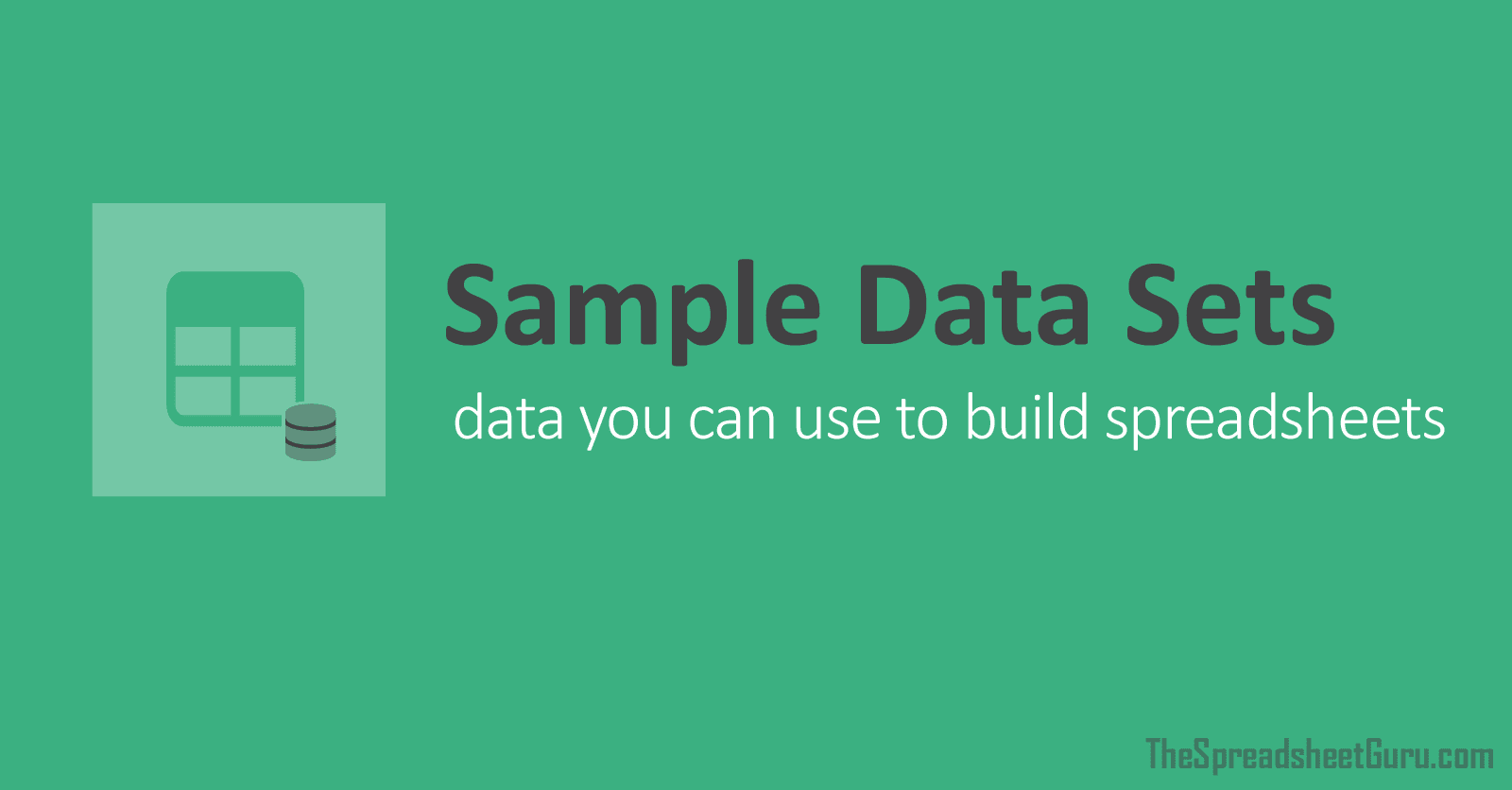
 Food Nutrients Data
Food Nutrients Data